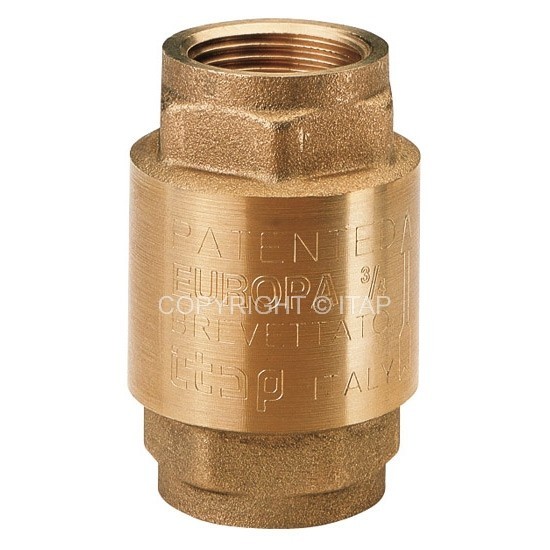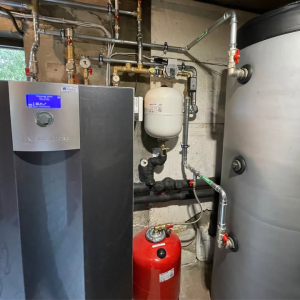Body in brass.
Plate in stainless steel.
Washer in NBR.
Spring in stainless steel.
Minimum and maximum working temperatures: -20°C, 100°C.
Threads: ISO228 (equivalent to DIN EN ISO 228 and BE EN ISO 228).
25bar/362.5psi
The valves are composed by a spring, a little valve and a couple of parts made of brass (body and endadapter) which contain them and that are assembled bt means of threat and a sealed material to obtain their aim. In order to avoid that the sealed material gets broken and then the valve looses the connection between the body and the end-adapter, it’s
necessary to avoid to submit the two parts under the influence of a torque. For the installation normal hydraulic practices must be used, and especially:
- The installer has to be sure that the two pipes are correctly allied;
- During the assembling process the installer has to apply its assembling tools at the end that is nearest to the pipe;
- The application of the sealing materials by the fitter (PTFE or hempen cloth) must be limited at the threat zone. An excess should interfere in the ball gas get’s closure zone, compromising the tightness;
-In case the fluid transported has got some impurities (dust, too hard water, and so on) it’s necessary to remove impurities by or filter them, otherwise they could damage the seal.
Disassembly the installed valve
To remove the valve from the pipe line or anyhow before unscrewing the connections linked:
- Wear the protective clothing normally required to work with carried fluids;
- Take the prerssure inside the line out;
- During the disassembling process, apply the key at the end of the valve, the one nearest the pipe
Maintenance
Verify the valve periodically, according to its application’s field and its works’ field and its work’s conditions, in order to be sure that the valve works correctly. In case of losses of tightening, take note that these can be caused by a deposit of foreign bodies (dirty, calcareous) on the rubber seal. In order to solve this inconvenient, it’s necessary to unmount the valve and remove the foreign body with compressed air tools.






